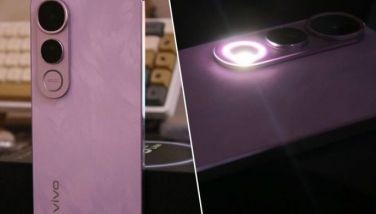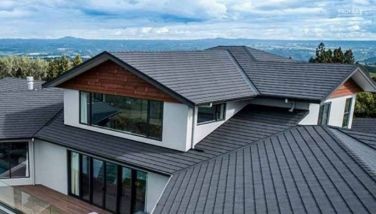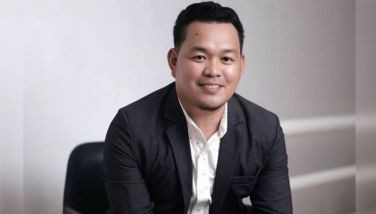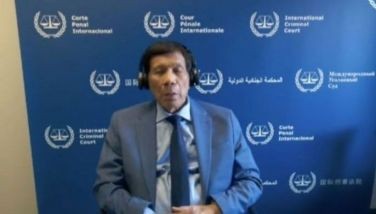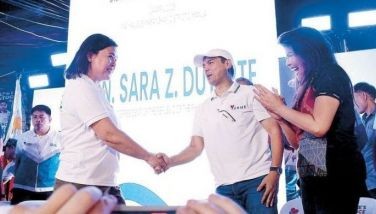Creative industries

HAMBURG – When all the overstaying shipping containers are finally moved out of Manila’s Port Area, the government may want to take a look at the ongoing port development in this German city.
The HafenCity port development project, meant to create a new downtown for Hamburg, is becoming a showcase that is attracting international attention not only for its main mission of urban renewal but also for flood control. Even the Dutch – experts in flood management – have expressed interest.
Information materials on HafenCity include two different photos of the same areas: not before and after construction, but one submerged in up to three meters (yes, about nine feet) of water, and the other on a dry day.
The 157-hectare area, touted as Europe’s largest inner-city development project, is designed to withstand being regularly submerged for several hours in water, either during high tide or storm floods that often inundate Hamburg.
Instead of fighting nature with dikes and levees, HafenCity is designed to make land interact with water.
Except for quays and promenades, the entire area is artificially raised by eight to nine meters above sea level. The government builds the foundations made of “warfts” or artificial compacted mounds, with smooth concrete walls featuring artfully designed red clinker brick patterns.
Private groups buying or leasing land are required to reinforce building foundations with numerous steel posts enclosed in concrete.
The unique floodwalls have sliding concrete windows that also keep out water when shut. Steel walkways elevated from the ground connect buildings, for use during floods or emergencies such as fires. Most of the new buildings are cantilevered to maximize space.
For environmental and aesthetic purposes, the developers are studying which trees are best suited to being regularly submerged in water for several hours. These will be propagated throughout HafenCity.
To break the monotony of the water, island pontoons have been installed, rising or falling with the tides. The pontoons connect the streets – named after different countries and foreign cities (no Manila, sorry) – to sloping “terraces” named after seafaring explorers such as Marco Polo and Ferdinand Magellan.
Despite regular flooding, a subway opened in December 2012, connecting the area that used to have only dingy, single-story sheds to the Hamburg city center.
The project, which will expand Hamburg’s city area by 40 percent, is attracting major investors, enterprises and top architects from around the world. Trendy cafés and dining areas dot the development. Unilever has a unique eco-friendly building with great views of the Elbe River. Last year BP, Hanjin Shipping and environmental group Greenpeace opened offices.
Last Friday I spotted heavy equipment drilling many holes into an open area in a construction site. HafenCity guide Robert Oschatz told me the workers were probing for explosives buried during the war.
Hamburg, said to be Europe’s second’s busiest port after Rotterdam in the Netherlands, escaped heavy destruction during Germany’s wars, and the city has retained many of its Old World structures.
Creative industries are playing a key role in the port project, with the city government opening the Hamburg Creative Society in 2010 to support these activities.
The emphasis on promoting creativity is happening not only in Germany but also in other European countries.
* * *
Jenny Kornmacher, in charge of the creative society’s communication and projects, said their office has seven employees and an annual budget of 750,000 euros. Barcelona, one of the world’s top cruise port destinations, is ahead in its support for the creative industries: Kornmacher said the Spanish city’s counterpart of the Hamburg society has 157 employees, with a budget of 62 million euros a year.
The European Commission itself recognizes the importance of the creative industries in economic development and improvement of the quality of life. In 2012 the commission set up the Brussels-based European Creative Industries Alliance. Twice a month Kornmacher provides personal advice to the ECIA.
The world’s fourth largest economy, Germany has a culture of innovation, which is needed to sustain its edge as the second largest global exporter after China. The current government coalition, with Angela Merkel reelected as chancellor last year, has committed to sustain the development of small and medium enterprises, 95 percent of which are run by families.
A hefty 99.6 percent of German firms are classified as SMEs, accounting for 52 percent of total economic output and employing 15.5 million people. Most of them are engaged in industrial production and electrical engineering.
German education is geared toward providing skilled workers for the country’s enterprises, and the government assists the firms in finding markets around the world. There is an excellence initiative in universities to encourage innovation.
The German government makes serious investments in R&D, with the coalition committing to allocate three percent of GDP for research.
* * *
For German automotive giant Volkswagen Werk AG, R&D and innovation are “hugely important,” according to Michael Lange of the company’s international communications group. “The customer drives innovation,” he said.
VW has developed an Autostadt (Car City) around its original assembly plant in Wolfsburg. The Autostadt is like an automobile theme park where a customer can look at the vehicles in the VW group, test-drive and then pick up his purchase from one of two massive moving parking lot towers.
Among the items on display at the car museum is the gold-painted “Swarovski Volkswagen” encrusted with thousands of 300,000 crystals applied by hand – the one-millionth Beetle made by VW.
Another is the first Porsche, which was rolled out in 1966 at the Frankfurt Motor Show. With its gleaming red finish, the Porsche 911 can look 21st century. This was the ethic of the car’s designer, Ferdinand Anton Ernst “Ferry” Porsche, who said design must survive the test of time.
At the uniquely shaped Porsche Pavilion in the Autostadt, visitors are greeted with Ferry Porsche’s words: “In the beginning I looked around but couldn’t find the car I dreamed of so I decided to build it myself.”
Porsche was an Austrian whose father, Ferdinand Jr., was commissioned by their compatriot, Adolf Hitler, to design the first Volkswagen or people’s car – the model we call the Beetle.
Innovation turned Germany into an economic powerhouse and made the German brand synonymous with world-class quality. The Germans are determined to keep it that way – whether it’s cars, urban renewal or flood control. And the strategy includes supporting the creative industries.
“It’s a serious industry with a lot of power behind it,” Kornmacher said.
- Latest
- Trending










